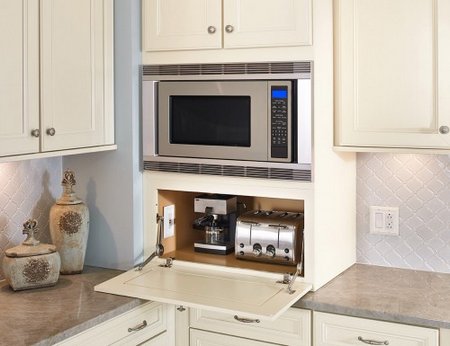Microwave: Must-Have Appliance In A Modern Kitchen – The microwave is one of the newest kitchen appliances and also one of the most popular. Since being invented in the 1940s and sold for home use in the 1960s, the microwave has revolutionized how we cook. In a bid to help you understand your microwave, and therefore get the most out of it, we’ve produced the following guide. This guide looks at how the microwave works, the best way to clean it, and how to replace the waveguide cover should it become faulty.
How a microwave works?
The controls for microwaves will often vary depending on the make and model of the appliance. However the principal of how a microwave works will remain the same.
Understanding the workings of a microwave will help you, should you notice a fault with the appliance.

How to clean a microwave?
To keep your microwave running for longer, it’s important to ensure it is regularly cleaned. Even if it doesn’t look dirty to the naked eye, bacteria and dirt can build up, resulting in unpleasant odors and increasing the risk of a hindered performance.
It’s recommended after every use any spills and splatters which have occurred in the microwave are cleaned up. More often than not such spills can be wiped away using an anti-bacterial wipe.
Along with wiping spills and splatters after use, carrying out a more thorough clean of the microwave on a weekly basis is a must, and it needn’t be difficult. Although there are a few considerations which need to be kept in mind, helping to ensure there’s no unnecessary damage.

Haier Microwave Oven MWM10100SS, $99.00
The first thing you need to make sure you don’t do is use a wool wire scouring pad to remove any burnt on food. Although the scouring pad is robust in removing such dirt, you run the risk of small parts of wool wire breaking off and causing sparks.
Instead, use a plastic one along with a dedicated microwave cleaner. Whether you opt for a spray, foam or gel, such a cleaner will soak into and loosen burnt on food within your microwave, which the plastic scouring pad will then remove with ease.
When cleaning your microwave, take care not to use too much water. This runs the risk of seeping down the sides of your waveguide cover and taking dirt with it.
Top tip: When cleaning your microwave, remove the waveguide cover at the end of the cleaning process. This will allow you to dry it using a clean tea-towel. Whilst the waveguide cover is off, double check no dirt has crept into the crevice. Such dirt could burn and cause future damage to the appliance.

The classic 50’s design of the Retro Series Microwave is reminiscent of the microwave ovens your grandmother would have used had she had a microwave; Nostalgia Electrics
During the cleaning process, the turntable and roller should be removed and cleaned. The roller can be wiped down with a damp cloth, whilst the turntable should be washed in the same way you’d wash the rest of your dishes.
You can limit how often you need to clean your microwave, by ensuring you cover food as you cook it, as this will help reduce the amount of food splatters or spills which occur.
NB: If covering food, make sure that the lid has gaps to allow steam to leave. If you’ve got a film cover, pierce this with a fork.

Morphy Richards EM820CPTF-PM
How to change the waveguide cover?
All microwaves use a waveguide cover to shield the opening where the microwaves in the appliance enter the main cooking cavity.
Whilst the cover may appear sturdy, over time general wear and tear can weaken them. If they become faulty your microwave can become dangerous to use.
It’s advisable to replace a waveguide cover at the earliest opportunity should it be damaged in any way. And replacing the cover is a straightforward task, but one which should be carried out with maximum care and attention.

Microwave daewoo lg 3d max
Microwave heating categories
The heating category of a microwave varies between A to E; and the rating is designed to indicate how quickly or slowly the microwave will heat food. For example, microwaves which fall into the E category will heat food quicker than those rated A – and you’ll find the rating of your microwave on the door of the appliance.
Generally, E rated microwaves are the most common and will cook between 740 and 800 watts, although this isn’t always accurate and it’s recommended to check the food is piping hot before eating.




















